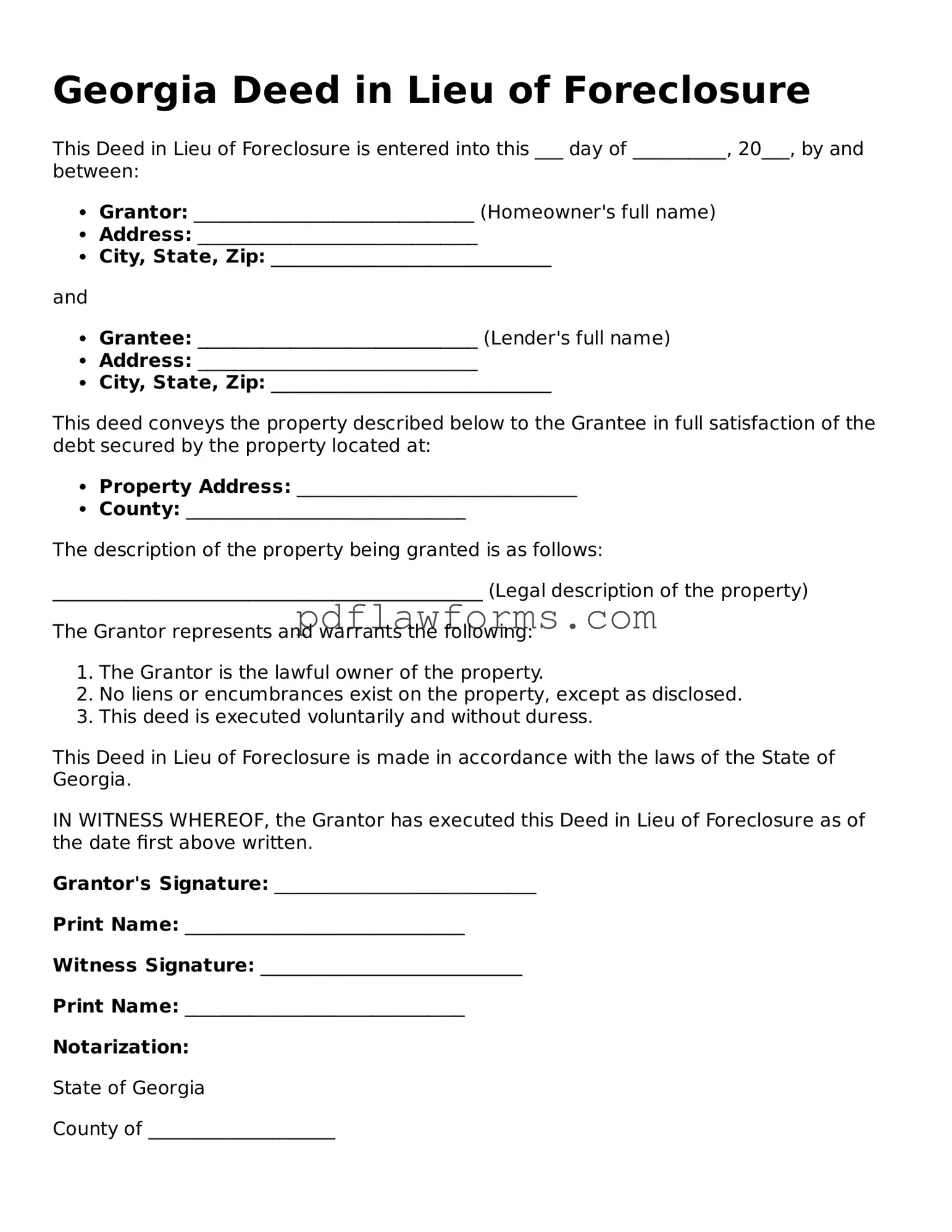Filling out a Georgia Deed form can seem straightforward, but there are common pitfalls that many people encounter. One frequent mistake is not providing accurate property descriptions. A precise description is crucial for identifying the property being transferred. Without it, the deed may be deemed invalid, leading to potential legal disputes.
Another common error is failing to include all necessary parties. When transferring property, it’s essential to list both the grantor (the person giving the property) and the grantee (the person receiving the property). Omitting one of these parties can create confusion and complications down the line.
Many individuals also overlook the requirement for notarization. In Georgia, a deed must be signed in the presence of a notary public. If this step is skipped, the deed may not hold up in court, which could jeopardize the transfer of ownership.
Inaccurate dates can lead to issues as well. It’s important to ensure that the date of the transaction is clearly stated and correct. An incorrect date may raise questions about the validity of the deed or create problems with the timeline of ownership.
Another mistake involves the failure to check for outstanding liens or encumbrances on the property. Before completing the deed, it’s wise to ensure that there are no legal claims against the property. Ignoring this step could result in transferring a property burdened with debts or legal issues.
Some people neglect to consider tax implications when filling out the deed. Understanding how the transfer may affect property taxes is essential. Failing to address this can lead to unexpected financial burdens after the transaction is complete.
Moreover, individuals sometimes use incorrect legal descriptions or abbreviations. It’s vital to use the full legal description as it appears in public records. Misusing abbreviations or shorthand can lead to ambiguity and potential legal challenges.
Lastly, many forget to keep a copy of the completed deed for their records. After signing and notarizing the document, it’s important to retain a copy for future reference. This simple step can save a lot of trouble should questions about the transaction arise later.
